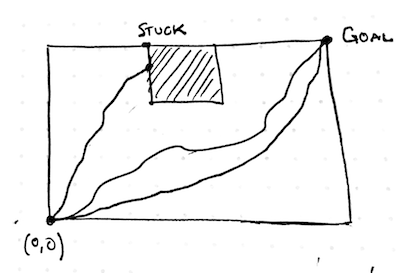Safety Liveness Decomposition and Machine Closure
Willy Schultz
Leslie Lamport
For safety and liveness properties S and L, machine closure means that any prefix of a behavior satisfying S can be extended to a behavior satisfying S /\ L. There is no reason that should be true for arbitrary S and L. For example take
S == (x \in {1, 2}) /\ [][x' = x + x]_x
L == <>(x = 17)
Any property can be written as S /\ L where (S, L) is machine closed.
One of the virtues of TLA is that there's a simple, practical way to write only machine-closed specs. If you write
S == Init /\ [][Next]_v
Then S, L is machine closed if L is the conjunction of at most countably many formulas of the form WF_v(A) or SF_v(A), where A => Next is true for all reachable states of S.
As for the paper "Safety and liveness from a methodological point of view", I suggest you read this response to it:
Preserving Liveness: Comments on "Safety and Liveness from a Methodological Point of View"
http://lamport.azurewebsites.net/pubs/abadi-preserving.pdf
As explained in Section 4.3 of
Prophecy Made Simple
http://lamport.azurewebsites.net/pubs/simple.pdf
adding prophecy variables can and often does produce a spec that is not machine closed. This is the case for the prophecy variables in the examples in Section 5.
Leslie
Willy Schultz

Note that Ron's blog post section on machine closure was helpful for me in understanding the concept more thoroughly.
Leslie Lamport
How specs should be machine closed; if they're not, then they don't really specify how. In principle, it doesn't matter whether what specs are machine closed. You should write the spec in a way that makes it easiest to understand. In practice, machine closed specs are usually easier to understand. But there are exceptions. I don't think there's any way to characterize those exceptions. This is not something to worry about. You should just make sure that you don't write a non-machine closed spec without realizing that's what you're doing; if you do, then your spec is probably wrong.
